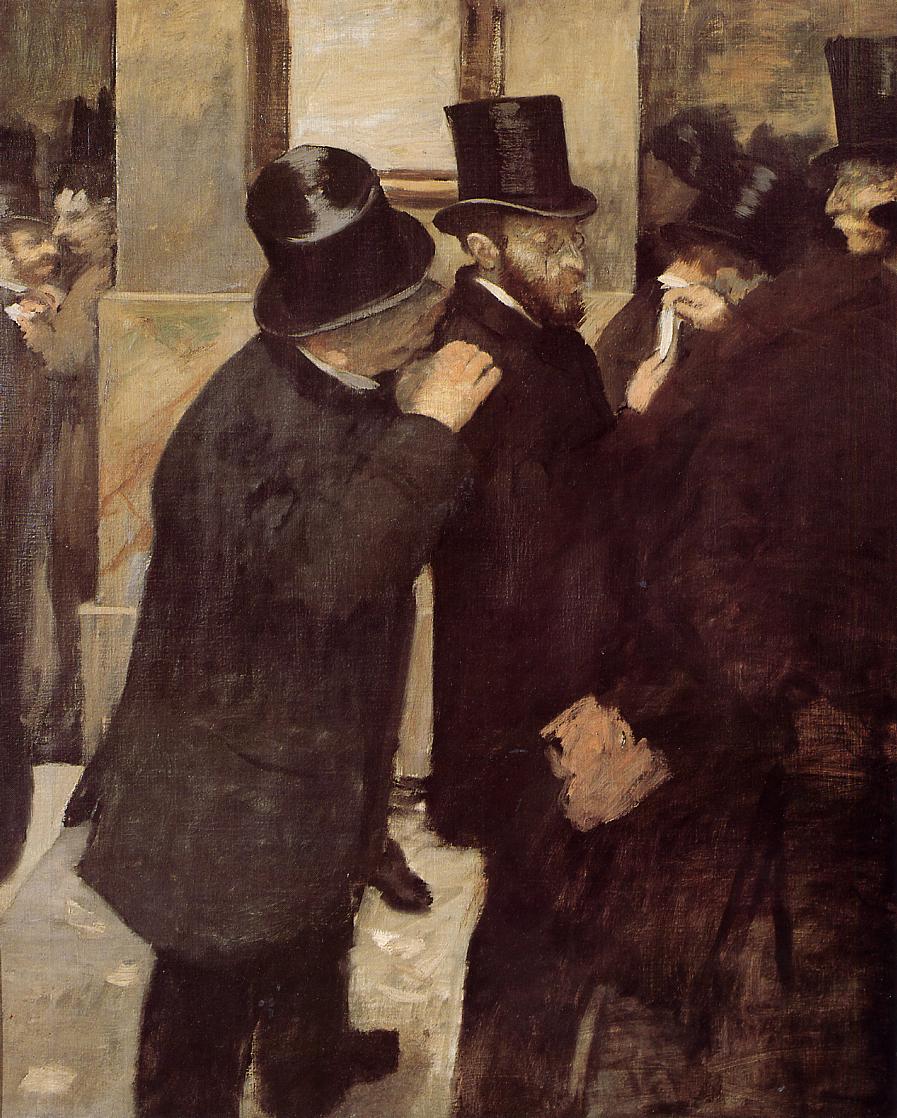art-Degas.com
Edgar Degas 1834-1917
Edgar Degas - At the Stock Exchange 1879
 At the Stock Exchange |
From Musée d'Orsay, Paris:
In his manifesto The New Painting that appeared in 1876, the art critic Edmond Duranty recommended that a portrait should be "the study of moral reflections on physical appearance and on dress, the observation of a man's intimacy with his home environment, of the special features that his profession imprints on him…"
Degas' paintings had largely inspired Duranty in this concept of the art of the portrait. A few years later, in this painting, the artist produced a new example of this style. In fact, what might at first be taken for a simple scene of Parisian life is essentially a portrait, that of the banker Ernest May (1845-1925), a collector and an admirer of Degas.
Seemingly chaotic, but with great evocative power, the composition relies on a solid and ingenious structure. The painter observes his subject with a certain distance. As the son of a failed banker, Degas knew the world of money makers but refused to be involved in it.
May dominates the scene. Around him, other characters suggest the agitation prevalent in the stock exchange. However, the artist does not show their faces, or leaves their features indistinct in order to direct attention to the model. May, with his long, pale face, seems incredibly older than his thirty-four years. His features are so refined; he might easily have come out of a painting by El Greco, an artist Degas admired. On the other hand, something of the artist's feelings towards the stock exchange and the world of finance filters through in the grotesque figures on the left, in the background. As well as depicting his model, Degas is showing the codes and customs of a whole social group representative of its time.